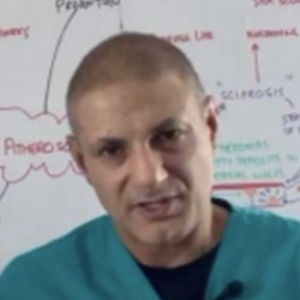Have you ever heard of trichotillomania? It’s what some call the hair-pulling disorder, which you might notice more in teens and young adults. Trichotillomania, also known as a hair-pulling disorder, is part of a group of conditions called body-focused repetitive behaviours (BFRBs).
These disorders also include skin-picking (dermatillomania) and nail-biting (onychophagia). Affecting 1%–2% of the population, these behaviours can cause significant distress and often occur alongside other psychiatric conditions [1].
Table of contents
- What is trichotillomania?
- Diagnostic criteria-DSM-5
- How many people have trichotillomania?
- When does trichotillomania start?
- Effects of trichotillomania
- What are the causes of trichotillomania?
- Trichotillomania and stress
- Trichotillomania and alopecia areata
- Trichophagia or hair eating and iron deficiency
- Treating with behaviour changes for trichotillomania
- Drug treatment for trichotillomania
For those with trichotillomania, there’s this overwhelming need to pull out their hair from places like the scalp, eyebrows, or even the pubic area. Why this happens isn’t completely understood, but it seems like pulling hair out can make some people feel better, especially when stressed. It’s like they’re doing it without realising it, especially when they’re feeling super overwhelmed or anxious.
The tricky part? This habit can be tough to break and can cause a lot of embarrassment and upset. But here’s the good news: there are ways to tackle it. Professionals often suggest cognitive behavioural therapy (CBT), which is all about understanding and changing your behaviour. Another strategy is keeping a diary to spot when the hair-pulling happens, figuring out what makes you want to do it, and then trying to steer clear of those triggers. And instead of pulling hair, finding something else to do with your hands, like squishing a stress ball, can also help. So, if this is something you’re dealing with, know there’s support out there to help you through it.
What is trichotillomania?
Trichotillomania is when someone can’t stop pulling out their hair, leading to noticeable bald spots. Hair pulling can happen on any part of the body where hair grows. The most common area people pull from is the scalp, followed by the eyelashes and eyebrows [2].
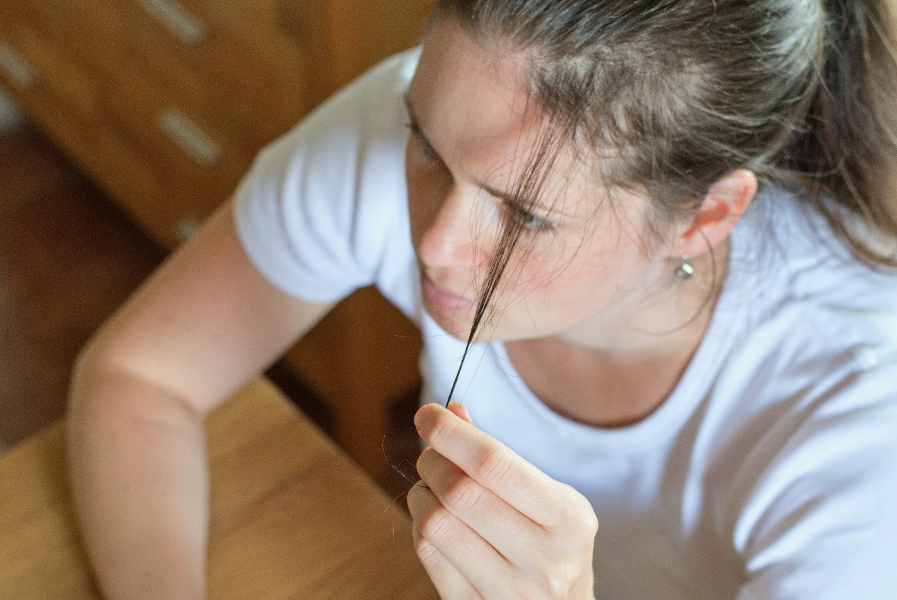
Diagnostic criteria-DSM-5
This condition is about not being able to control certain impulses. Even though doctors have talked about trichotillomania (hair-pulling disorder) for over 100 years [3], it wasn’t officially recognised as a mental health disorder until 1987.
The American Psychiatric Association’s DSM-5 groups trichotillomania (hair-pulling disorder) under obsessive-compulsive and related disorders. It describes the condition as involving repeated hair pulling and multiple attempts to reduce or stop the behaviour.
Hair pulling can happen when a person is either relaxed or stressed, but a feeling of tension often builds up before pulling or when trying to resist the urge. Some experts suggest that there are two types of hair pulling: “automatic” pulling, which happens without much awareness during activities like watching TV, and “focused” pulling, which is a response to negative emotions or stress. These two types might need different treatment approaches.
The specific DSM-5 criteria for trichotillomania (hair-pulling disorder) are as follows[4]:
- Recurrent pulling out of one’s hair, resulting in hair loss
- Repeated attempts to decrease or stop the hair-pulling behaviour
- The hair pulling causes clinically significant distress or impairment in social, occupational, or other important areas of functioning
- The hair pulling or hair loss cannot be attributed to another medical condition (e.g., a dermatologic condition)
- The hair pulling cannot be better explained by the symptoms of another mental disorder (e.g., attempts to improve a perceived defect or flaw in appearance, such as may be observed in body dysmorphic disorder)
How many people have trichotillomania?
Although there aren’t many studies on how common trichotillomania is in the U.S., it’s estimated that about 8 million people have the condition. The overall frequency is probably underestimated because only persons who present for treatment are counted; denial of the disorder is frequent, and many individuals with the disorder do not seek professional intervention. Further epidemiologic studies are needed. In a study of college students, approximately 1%-2% had past or current symptoms of trichotillomania [5].
When does trichotillomania start?
The onset of trichotillomania typically occurs between the ages of 10 and 13, a pattern consistently observed across various studies [6]. In adults, trichotillomania (hair-pulling disorder) is much more common in women, with about four times as many women affected as men, which is unusual compared to other mental health conditions. However, in children, boys and girls are equally likely to have the disorder.
Trichotillomania is often a long-term condition that can last from weeks to many years, and the age when it starts can vary. The areas where people pull hair may change depending on when it begins. For example, people who start pulling hair at a very young age are more likely to pull their eyelashes, while those who start later are more likely to pull pubic hair [7].
Effects of trichotillomania
From a skin perspective, trichotillomania is considered a type of traumatic hair loss caused by repeated hair-pulling. This behaviour can also occur alongside other repetitive grooming habits, like nail-biting and skin-picking.
The pattern of hair loss in trichotillomania can vary a lot. The scalp is the most common area for hair-pulling, but it can also affect the eyebrows, eyelashes, pubic area, underarms, limbs, torso, and face. The hair on the head is usually pulled out, leaving spots where it doesn’t look right because it’s all different lengths. So, the hair loss can range from small, barely noticeable patches to complete baldness in the affected areas.
Some people with trichotillomania also engage in trichophagia, which is the habit of eating the hair they pull out.
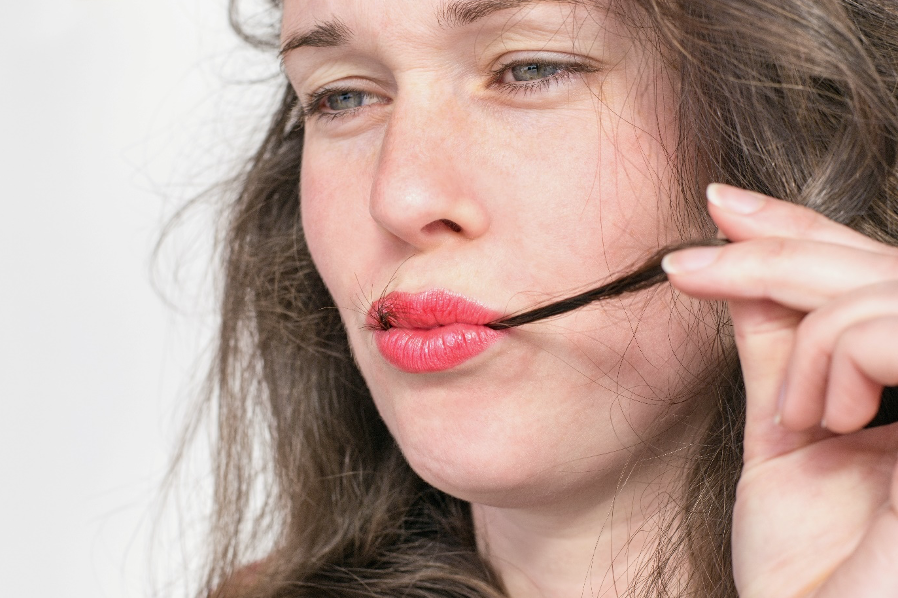
This can lead to Rapunzel syndrome, a very rare condition where a large hairball, called a trichobezoar, forms in the stomach and extends into the small intestine. This gives the hairball a shape that looks like a comma. Trichotillomania, the overwhelming urge to pull out one’s own hair, was first described by Hallopeau in 1889. However, Baudamant reported the first case of a hairball (trichobezoar) much earlier, in 1779 [8]. Trichobezoars (hairballs) usually don’t cause symptoms until they grow quite large. Rapunzel syndrome is a rare type of trichobezoar, first described by Vaughan and colleagues in 1968 in two patients [9]. The condition was named after the fairy-tale character Rapunzel, known for her long, flowing hair. These hairballs can cause serious health problems like anaemia, stomach pain, nausea, vomiting, bowel blockages, internal bleeding, and even pancreatitis or jaundice.
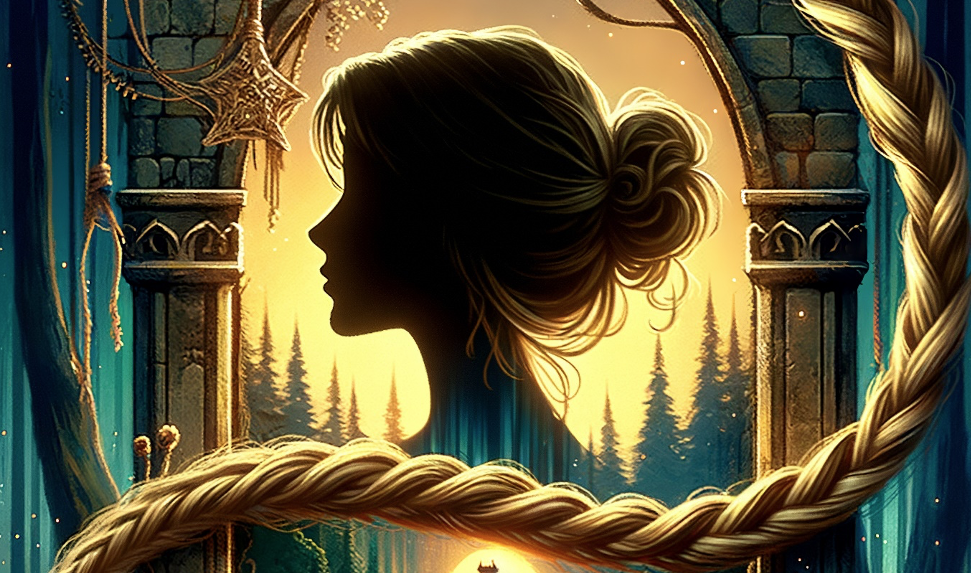
What are the causes of trichotillomania?
The exact cause of trichotillomania is still unclear, though both environmental and genetic factors are thought to play a role. Several explanations have been proposed for why hair-pulling starts and continues:
- Coping with stress or anxiety: Hair-pulling may be a way to manage stressful or anxious feelings.
- Sensory habit: It might begin as a harmless response to something like an itchy eyelash but develop into trichotillomania over time.
- Habitual behaviour in children: It may occur alongside other habits, such as thumb-sucking, in young kids.
- Serotonin deficiency: A lack of the neurotransmitter serotonin could be linked to trichotillomania, as some people with the condition respond well to selective serotonin reuptake inhibitors (SSRIs).
- Brain structure abnormalities: MRI studies have found that some individuals with trichotillomania have differences in brain regions involved in controlling habits and emotions [10].
- Abnormal brain metabolism: PET scans have shown higher glucose activity in certain brain areas in some people with trichotillomania.
- Genetic predisposition: There is some evidence that genetics may play a role, as trichotillomania is more common in people with obsessive-compulsive disorder (OCD) and their close relatives [4].
- Psychological factors: Various psychological theories suggest that trichotillomania in children may be linked to managing stress, regulating emotions, or seeking sensory stimulation [11].
- Reward system changes: Research indicates that trichotillomania may be related to an altered reward system in the brain, with specific brain areas showing abnormal activity [12].
- Neurodegenerative disease links: There is also some evidence that trichotillomania may be associated with neurodegenerative diseases, like Parkinson’s and dementia, in older adults [13].
These theories offer insight into different factors that might contribute to the development of trichotillomania, though more research is needed to fully understand its causes.
Trichotillomania and stress
For younger children, pulling out their hair might start as a way to deal with small frustrations, especially when they’re feeling stressed. Over time, it just becomes something they do without thinking. As people hit puberty and get older, the reasons behind trichotillomania can get more complex, and it’s harder to get better, especially for girls.
Traumatic hair loss due to child abuse, though uncommon, is another cause that should be considered if there is no other explanation for the hair loss [14].
Trichotillomania and alopecia areata
When looking into reasons for hair loss, one key condition to consider is alopecia areata. This is an autoimmune condition where the body mistakenly attacks its own hair follicles, causing temporary, non-scarring hair loss. The hair follicles remain intact, and hair loss can vary from small, well-defined patches to widespread or total hair loss, affecting any hair-bearing areas. The most common type involves patchy hair loss on the scalp. About 2% of people will experience alopecia areata at some point in their lives. In affected skin, a biopsy often shows immune cells (lymphocytes) around the base of hair follicles during the hair growth phase, suggesting the immune system’s attack on the follicles is a key cause of the condition [15].
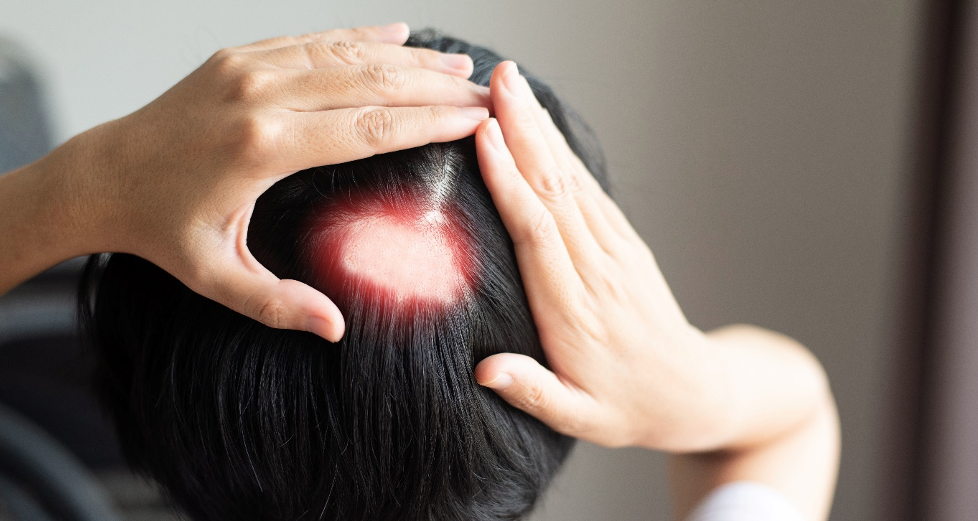
Sometimes, if someone has alopecia areata and their scalp feels itchy, they might start scratching a lot. This scratching can turn into a habit where they actually pull out their hair without meaning to, called trichotillomania. It gets tricky to figure out what’s going on because one issue can lead to the other. In some cases, people might keep pulling out their new hair as it grows back on purpose. They might do this because, in a way, the attention and care they get while their hair is missing feels good to them [16].
Trichophagia or hair eating and iron deficiency
If a child is eating their hair, which is more common than you might think, it could be a sign that they are missing iron in their diet. Children with trichophagia should be screened for iron deficiency as part of their evaluation since the association of pica and an unusual craving for nonfood items -and iron deficiency has been reported. This craving to eat non-food items, along with low iron, can be connected. Fixing the iron deficiency with the right supplements usually stops the craving to eat hair. But, the lack of iron could be because of the hair eating itself or because eating hair has caused problems in the stomach [17].
Treating with behaviour changes for trichotillomania
Treating hair-pulling isn’t just about one thing. It involves helping the person change their hair-pulling habit, manage stress better, and make positive behaviour changes. Parents play a big role if their child is pulling out their hair. They need to catch the problem early and support their child through treatment. This might include keeping track of when and why the child feels like pulling their hair and teaching them other things to do instead, like holding a stress ball. Learning how to relax and handle stress, maybe even getting rewards for making progress, can help a lot. Talking with a therapist to understand and change how they think about hair pulling can also be really helpful.
Drug treatment for trichotillomania
The same medications used for obsessive-compulsive disorder are also used for trichotillomania. These include older meds like imipramine [18] and clomipramine, as well as newer ones called SSRIs such as fluoxetine, fluvoxamine, sertraline, and paroxetine [19]. However, it’s crucial to note that these medications need time to work – usually more than 8 to 12 weeks. Stopping the medication too soon often leads to the problem coming back. While SSRIs can help, they don’t solve everything for everyone, indicating the need for different treatments for different people.
One exciting finding was the combination of the SSRI escitalopram with the anticonvulsant topiramate, which showed promise in treating trichotillomania. A study with 14 adults suggested that topiramate could be effective, paving the way for more research in this area [20].
Another innovative treatment involves N-acetylcysteine, an amino acid thought to help with compulsive behaviors by affecting glutamate, a chemical in the brain. A study with 50 people found that it significantly helped reduce symptoms without any side effects, making it a well-tolerated option [21].
However, when trying N-acetylcysteine with kids and teenagers, the results weren’t as clear. There wasn’t a big difference between those who took the supplement and those who didn’t, although some improvement was seen over time in both groups [22].
Lastly, there’s dronabinol, a cannabinoid agonist, which basically means it activates the cannabinoid receptors in the brain. The researchers thought that dronabinol reduced the damage caused by excess glutamate, which causes ecitation in the striatum of the brain. A small study with women found it significantly reduced symptoms without messing with their thinking abilities, making it another interesting avenue for treatment [23].
So, while trichotillomania can be tough to tackle, these findings offer hope and show that there are various ways to approach its treatment, highlighting the importance of personalized care.

References:
- Mackay CETrichotillomania: a perspective synthesised from neuroscience and lived experienceBMJ Ment Health 2023;26:e300795.
- Franklin, M.E., Flessner, C.A., Woods, D.W., Keuthen, N.J., Piacentini, J.C., Moore, P., Stein, D.J., Cohen, S.B., Wilson, M.A. and Board, T.L.C.S.A., 2008. The child and adolescent trichotillomania impact project: descriptive psychopathology, comorbidity, functional impairment, and treatment utilization. Journal of Developmental & Behavioral Pediatrics, 29(6), pp.493-500.
- Chamberlain SR, Odlaug BL, Boulougouris V, et al: Trichotillomania: neurobiology and treatment. Neurosci Biobehav Rev 2009; 33:831–842
- American Psychiatric Association: (2013) Diagnostic and statistical manual of mental disorders: DSM-5
- Christenson, G.A., Pyle, R.L. and Mitchell, J.E., 1991. Estimated lifetime prevalence of trichotillomania in college students. The Journal of clinical psychiatry, 52(10), pp.415-417.
- Flessner, C.A., Lochner, C., Stein, D.J., Woods, D.W., Franklin, M.E. and Keuthen, N.J., 2010. Age of onset of trichotillomania symptoms: investigating clinical correlates. The Journal of nervous and mental disease, 198(12), pp.896-900.
- Christenson GA: Trichotillomania: from prevalence to comorbidity. Psychiatr Times 1995; 12:44–48
- Faria AP, Silva IZ, Santos A, Avilla SGA, Silveria AE: The Rapunzel syndrome – a case report: trichobezoar as a cause of intestinal perforation (in Portuguese). J Pediatria (Rio J) 2000;76:83–86.
- Vaughan ED Jr, Sawyers JL, Scott HW Jr: The Rapunzel syndrome. An unusual complication of intestinal bezoar. Surgery 1968;63:339–343.
- Isobe, M., Redden, S.A., Keuthen, N.J., Stein, D.J., Lochner, C., Grant, J.E. and Chamberlain, S.R., 2018. Striatal abnormalities in trichotillomania: a multi-site MRI analysis. NeuroImage: Clinical, 17, pp.893-898.
- Diefenbach, G.J., Tolin, D.F., Meunier, S. and Worhunsky, P., 2008. Emotion regulation and trichotillomania: A comparison of clinical and nonclinical hair pulling. Journal of Behavior Therapy and Experimental Psychiatry, 39(1), pp.32-41.
- White, M.P., Shirer, W.R., Molfino, M.J., Tenison, C., Damoiseaux, J.S. and Greicius, M.D., 2013. Disordered reward processing and functional connectivity in trichotillomania: a pilot study. Journal of Psychiatric Research, 47(9), pp.1264-1272.
- De Sousa, A. and Mehta, J., 2013. Trichotillomania in a case of vascular dementia. International Journal of Trichology, 5(1), pp.38-39.
- Trüeb, R.M., 1993. Trichotillomania/Battered child syndrome. European Journal of Pediatric Dermatology, 3(3), pp.134-135.
- Pratt, C.H., King, L.E., Messenger, A.G., Christiano, A.M. and Sundberg, J.P., 2017. Alopecia areata. Nature reviews Disease primers, 3(1), pp.1-17.
- Trüeb, R.M. and Cavegn, B., 1996. Trichotillomania in connection with alopecia areata. Cutis, 58(1), pp.67-70.
- McGehee, F.J. and Buchanan, G.R., 1981. Trichophagia and trichobezoar: etiologic role of iron deficiency.
- Weller, E.B., Weller, R.A. and Carr, S., 1989. Case Study: Imipramine Treatment of Trichotillomania and Coexisting Depression in a Seven-Year-Old. Journal of the American Academy of Child & Adolescent Psychiatry, 28(6), pp.952-953.
- Sheikha, S.H., Wagner, K.D. and Wagner Jr, R.F., 1993. Fluoxetine treatment of trichotillomania and depression in a prepubertal child. Cutis, 51(1), pp.50-52.
- Lochner, C., Seedat, S., Niehaus, D.J. and Stein, D.J., 2006. Topiramate in the treatment of trichotillomania: an open-label pilot study. International clinical psychopharmacology, 21(5), pp.255-259.
- Grant, J.E., Odlaug, B.L. and Kim, S.W., 2009. N-acetylcysteine, a glutamate modulator, in the treatment of trichotillomania: a double-blind, placebo-controlled study. Archives of general psychiatry, 66(7), pp.756-763.
- Bloch, M.H., Panza, K.E., Grant, J.E., Pittenger, C. and Leckman, J.F., 2013. N-Acetylcysteine in the treatment of pediatric trichotillomania: a randomized, double-blind, placebo-controlled add-on trial. Journal of the American Academy of Child & Adolescent Psychiatry, 52(3), pp.231-240.
- Grant, J.E., Odlaug, B.L., Chamberlain, S.R. and Kim, S.W., 2011. Dronabinol, a cannabinoid agonist, reduces hair pulling in trichotillomania: a pilot study. Psychopharmacology, 218, pp.493-502.
